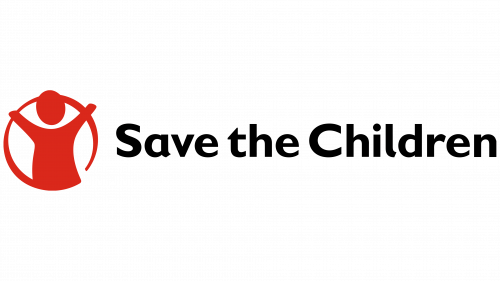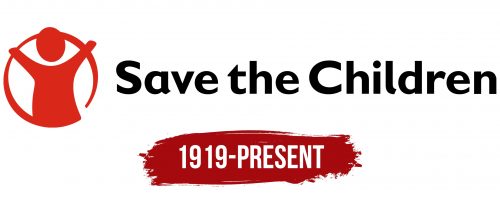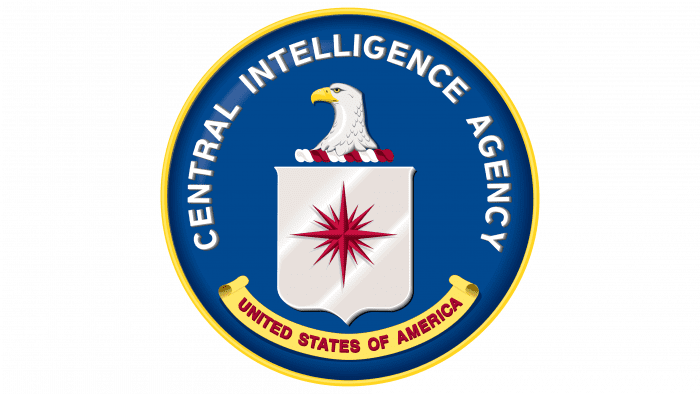Save The Children’s logo is vibrant and active. The emblem is energetically charged, urging people to assist the affected children. The sign calls for action, breaking the chains of injustice.
Save The Children: Brand overview
| Founded: | 15 April 1919 |
| Founder: | Eglantyne Jebb, Dorothy Buxton |
| Headquarters: | London, England, U.K. |
| Website: | savethechildren.net |
Meaning and History
The organization has existed for over 100 years, yet its symbol and mission have remained consistent. Save The Children doesn’t focus on external glamor; all resources are directed towards helping needy children. This explains the absence of significant rebranding efforts. The existing symbol featuring a child remains the emblem’s core and perfectly encapsulates the essence of their work. Since 1919, only minor tweaks have been made to the logo’s overall image. Initially, the child had its arms lowered. In 1973, it was replaced with a figure raising its arms, and around 1999, the color palette was revised.
What is Save The Children?
It’s a child rescue organization founded in England. Thanks to two sisters, children in Germany, Austria, Belgium, and Vienna, over 300,000 kids in Russia and around 350,000 adults were saved from starvation during 1919-21. The Declaration of the Rights of the Child, drafted by Eglantyne Jebb, was adopted by The League of Nations. The association influenced the creation of kindergartens for the underprivileged, organized child nutrition in schools, introduced play centers, and much more.
1919 – today
The emblem consists of a drawing and the organization’s name in black font. The illustration portrays a waist-high schematic figure of a child with arms raised, enclosed in a red circle.
The image was inspired by relief sculptures of children within circular structures on the facade of the Ospedale degli Innocenti, a children’s orphanage in Italy. These 15th-century sculptures echoed the phrase: “Save the children.” The circle in the figures alluded to a basin and later a wheel, where parents would place their abandoned child.
In the logo, the red circle conveys several meanings:
- Prohibition against demeaning or harming children. The circle is reminiscent of traffic signs where figures with a red border indicate prohibition. This suggests that children shouldn’t be harmed or mistreated. The composition declares: “Caution, children are present here.” Refrain from doing anything that might harm them.
- Children in distress. The depicted child appears surrounded confined, and tries to reach out to the world. The organization speaks for the defenseless and those needing protection. They fight to free children from slavery, humiliation, and poverty. Initially, the alliance was formed to protect children in Germany from starving during World War I when political strategies kept the country under blockade. Children were underfed, prompting a movement in England to save them. The child in the logo breaks barriers. He is free.
- The red circle can be interpreted as a ring of love. Children are surrounded by love and protection. The child’s raised hands signify joy and happiness. A free, genuine childhood. The organization’s primary goal is to make children happy. Eglantyne Jebb believed that everyone who interacts with children should partake in ensuring their rights and take responsibility for their happiness.
- The globe. The organization operates globally, and the circle symbolizes the world.
The child figure appears schematic, representing boys and girls worldwide. Artists purposely refrained from depicting hair, clothing, or skin color since the organization cares about all children. There’s speculation that the character Charlie Brown from the comics may have been the prototype for the “bald” child. Stories about this boy were released in many European countries, often portraying him in challenging situations. In 1973, he was depicted crying with his arms raised.
The organization’s name simultaneously serves as a call to action, touching people’s hearts irrespective of their country. In any culture, it’s understood that children represent the future. The inscription is aligned at one level, underscoring the simplicity and clarity of the message.
Font and Colors
The child figure is rendered in red. This shade immediately captures attention. Depending on context, the color can symbolize love, celebration, joy, blood, danger, and conflict. This choice aptly mirrors the organization’s mission. They intervene where there’s danger and illegal activities, safeguarding the children and establishing a world for the youngsters where it’s light and cheerful.
The color also exemplifies a vivid vision for the future, the global objectives the organization sets for itself. Before her passing, the movement’s founder stated that the company should rescue children from hardships and adverse situations and eradicate their root causes. Save The Children’s mission is to transform the world by eliminating poverty.
The inscription is crafted in the neat Fiendstar Bold Extended font, with truncated glyphs for L and A. This design hints at childhood, and the rounded dot above the “i” resonates with the schematic depiction of the child’s head.





